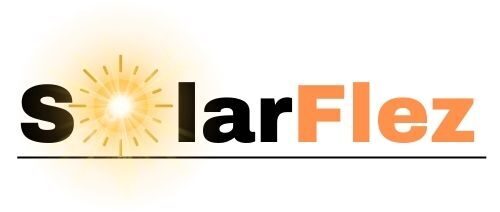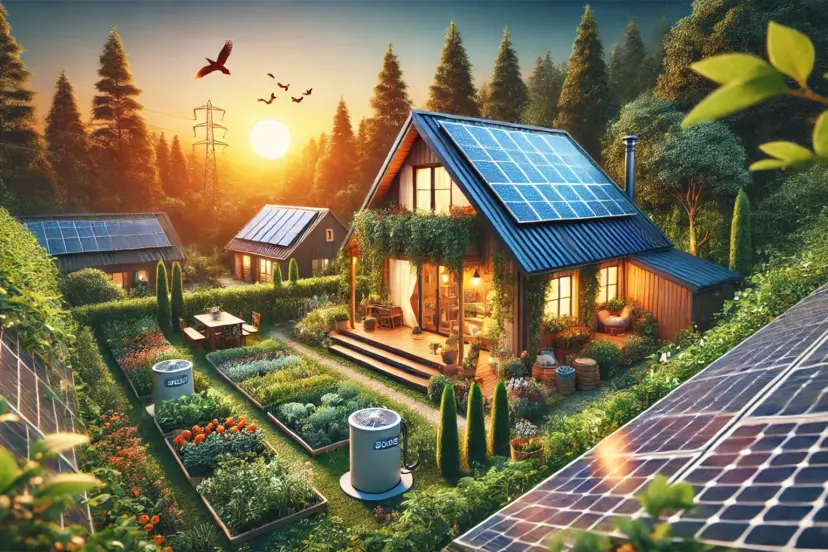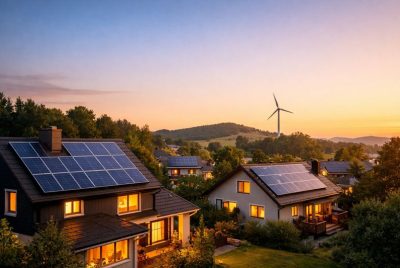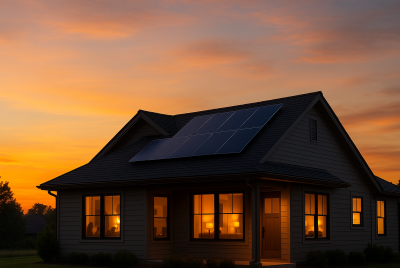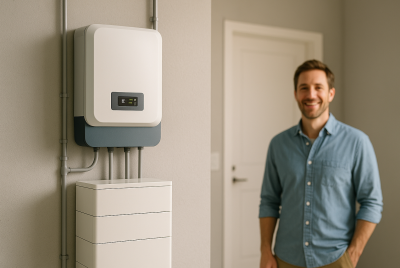Off-Grid Solar Power Systems: A Bright Path to Energy Freedom
Has the desire to live your life as you see fit ever crossed your mind? Imagine living in a home without traditional electricity, where there are no energy expenses or power outages. With off-grid solar power options, you can achieve that goal. They are about more than simply power; they are about independence, sustainability, and taking control of your energy future. Let’s look into this fascinating option together to determine if it’s the right one for you.
What Is an Off-Grid Solar Power System?
Owning a personal power plant is comparable to having an off-grid solar power system. It does all of the production, storage, and operation of your home without the need for the main electrical grid. This suggests that you are in charge of your energy and not dependent on utility companies. Whether you’re in a remote lodge or just want to live a more eco-friendly lifestyle, this arrangement can provide reliable electricity wherever you are.
Why Choose an Off-Grid System?
Selecting an off-grid system is a lifestyle choice in addition to a practical one. It guarantees you won’t be left in the dark during blackouts and allows you to live freely. You’ll also feel better knowing that clean, renewable energy is supplying your energy. This is a step in the direction of a more robust and sustainable future for anyone wishing to disconnect from the conventional grid.
Key Components of an Off-Grid Solar Power System
Let’s dissect it. A few essential components of an off-grid solar system cooperate to provide you with electricity. The solar panels, which absorb sunlight and transform it into electrical power, come first. After that, the energy is stored in batteries so it may be used when the sun isn’t out. While the charge controller makes sure everything functions properly without taxing your batteries, the inverter intervenes to make that electricity usable for your appliances. Every element is essential, and when combined, they create an energy system that is both effective and empowering.
How Does an Off-Grid Solar System Work?
This is how everything fits together. Imagine your solar panels, which produce power, receiving the sun’s rays. The batteries receive the electricity and store it until you need it. The inverter ensures that your lights, appliances, and other devices have power. It’s a straightforward, self-sufficient system that keeps your house powered every day.
Sizing Your System: The Power Puzzle
Achieving the ideal off-grid system size is similar to solving a riddle. Your daily energy consumption, the amount of sunlight in your location, and the amount of electricity you wish to save for overcast days must all be determined. A system that is too huge could cost more than you need to, while one that is too tiny can leave you without enough energy. Making the effort to determine your energy requirements guarantees that your system will work flawlessly with your way of life.
Advantages of Off-Grid Systems
The benefits of living off the grid are numerous. The first benefit is that you won’t have to depend on utility providers anymore, giving you the flexibility to be energy independent. Second, it’s a great approach to adopt a more environmentally conscious lifestyle and lessen your carbon impact. Not to mention the comfort that comes from knowing that your house would continue to have electricity even in the event of a grid outage.
Challenges of Off-Grid Living
However, there are drawbacks to living off the grid. In addition to the initial cost of setting up an off-grid system, there are continuing maintenance costs to take into account, particularly for your batteries. Rainy or overcast days may have an impact on the amount of energy your system produces. However, these obstacles can be overcome with careful preparation and a solid contingency plan.
Batteries: The Backbone of Your System
The unsung heroes of every off-grid solar power system are the batteries. For usage at night or in overcast conditions, they store the energy produced by solar panels. Lead-acid, lithium-ion, and flow batteries are among the various battery kinds available. Each has advantages and disadvantages, so it’s critical to choose the one that best suits your spending limit, energy requirements, and maintenance preferences.
Inverters: Making Power Usable
The inverter is like the translator of your solar power system. It takes the raw electricity produced by your panels and converts it into a form that your appliances can use. A high-quality inverter is essential for keeping your system running smoothly. It’s worth investing in one that matches your system’s size and your household’s energy demands.
Planning for Backup Power
Even with a well-designed system, it’s smart to have a backup plan. A generator can be a lifesaver during extended cloudy spells or when your energy usage unexpectedly spikes. While it might seem like an extra expense, having a backup ensures you’re never caught off guard.
Installing Your System: DIY or Hire a Pro?
When it comes to installing your system, you’ve got options. If you’re confident with tools and wiring, a DIY installation can save money. But if the thought of handling electrical components makes you nervous, hiring a professional is the way to go. Professionals ensure your system is set up safely, complies with local regulations, and operates efficiently.
Cost Breakdown: What to Expect
Let’s talk money. The cost of an off-grid system depends on the size of your setup and the components you choose. For a typical home, you’re looking at an investment of $10,000 to $30,000. While the upfront cost might feel steep, remember that this is a long-term solution that pays off in lower bills and greater independence over time.
Energy Efficiency: Maximizing Every Watt
The less energy your home uses, the more efficient your system will be. Simple changes like switching to LED lights, using energy-efficient appliances, and improving your home’s insulation can make a big difference. By reducing your energy needs, you’ll get the most out of your off-grid system without breaking the bank.
Off-Grid Systems for Different Needs
Off-grid systems aren’t one-size-fits-all—they can be tailored to meet various needs. For a small cabin or vacation home, a compact setup with a few panels and batteries might be enough. Larger homes need more robust systems to handle higher energy demands. Even RVs and tiny homes can benefit from portable, lightweight systems designed for life on the move.
Legal and Zoning Considerations
Before you dive in, check the rules in your area. Some locations have specific regulations about solar installations, battery storage, or even living off the grid entirely. Doing your homework beforehand ensures you won’t run into legal or zoning issues down the line.
Monitoring and Maintaining Your System
Keeping your system in tip-top shape is all about regular maintenance. Clean your solar panels to keep them efficient, check your batteries for wear and tear, and monitor your system’s performance to catch any issues early. Many systems now offer remote monitoring options, making it easier than ever to keep tabs on your energy production and usage.
The Future of Off-Grid Solar Power
The future of off-grid solar power is bright—literally. As technology advances, systems are becoming more affordable and efficient. Innovations like solar shingles and solid-state batteries are making it easier for more people to embrace this lifestyle. The growing demand for sustainable energy solutions ensures that off-grid solar power will only continue to improve.
The Impact and Potential of Off-Grid Solar Power Systems
Off-grid solar power systems are revolutionizing energy access, especially in underserved regions. A study conducted in Pakistan’s Swat district revealed that off-grid solar photovoltaic (PV) technology is transforming lives by providing clean, reliable, and cost-effective electricity to areas lacking reliable grid access, significantly enhancing socioeconomic development. Similarly, a comprehensive review on off-grid power solutions highlights the scalability of solar power systems as a sustainable option for energy independence. However, it also underscores challenges like sunlight dependency and reduced efficiency during cloudy conditions, emphasizing the need for innovative solutions to maximize their potential. These insights demonstrate the transformative power of off-grid solar systems in driving sustainable development and empowering communities worldwide.
Popular Solar Products Available on Amazon
Solar technology has become increasingly accessible, with a variety of products available to meet different needs. Amazon offers a wide range of solar-powered solutions, from home energy systems to portable devices for outdoor use. Here are some standout products that have gained popularity for their quality and performance:
Renogy 200 Watt 12 Volt Solar Starter Kit
This comprehensive kit is perfect for beginners looking to harness solar energy for RVs, cabins, or small homes. It includes two high-efficiency 100-watt monocrystalline solar panels, a charge controller, and all the necessary cables for easy installation. With its durability and reliable performance, the Renogy Starter Kit is a favorite among those transitioning to off-grid living.
Jackery Explorer 1000 Portable Power Station
For those who need a portable solar energy solution, the Jackery Explorer 1000 is an excellent choice. This powerhouse offers 1000W of pure sine wave output and pairs seamlessly with the Jackery SolarSaga 100W Solar Panels. It’s ideal for camping, road trips, and emergency backup power, ensuring your devices stay charged wherever you are.
Aootek 182 LED Solar Outdoor Motion Sensor Lights
Aootek’s solar motion sensor lights are a practical and eco-friendly solution for outdoor security lighting. Featuring 182 high-efficiency LEDs, these lights provide bright illumination and three operational modes, including security, dim light, and constant light. They’re weatherproof and easy to install, making them a top choice for home safety.
ECO-WORTHY 10kWh 48V Complete Off-Grid Solar Power Kit
For homeowners looking for a full-scale off-grid solution, the ECO-WORTHY Complete Solar Power Kit delivers exceptional value. It includes 18 solar panels, a 5kW inverter, and a 48V battery bank with a total capacity of 10kWh. Designed to power an entire household, this kit is perfect for long-term energy independence.
These products demonstrate the versatility and practicality of solar technology, catering to diverse energy needs and lifestyles. Whether you’re planning to power a home, light up a yard, or charge devices on the go, these solar solutions available on Amazon make the transition to renewable energy easier than ever.
FAQs About Off-Grid Solar Power Systems
- How much does an off-grid solar power system cost?
Typical systems range from $10,000 to $30,000, depending on size and components. - Can I install an off-grid system anywhere?
Yes, but the feasibility depends on sunlight availability and local regulations. - How long do off-grid systems last?
Solar panels can last 25-30 years, while batteries usually need replacing every 5-15 years. - Do I need a backup generator?
A generator isn’t mandatory but is highly recommended for emergencies or extended cloudy periods. - Is off-grid living worth it?
If you value energy independence, resilience, and sustainability, it’s absolutely worth the investment.
